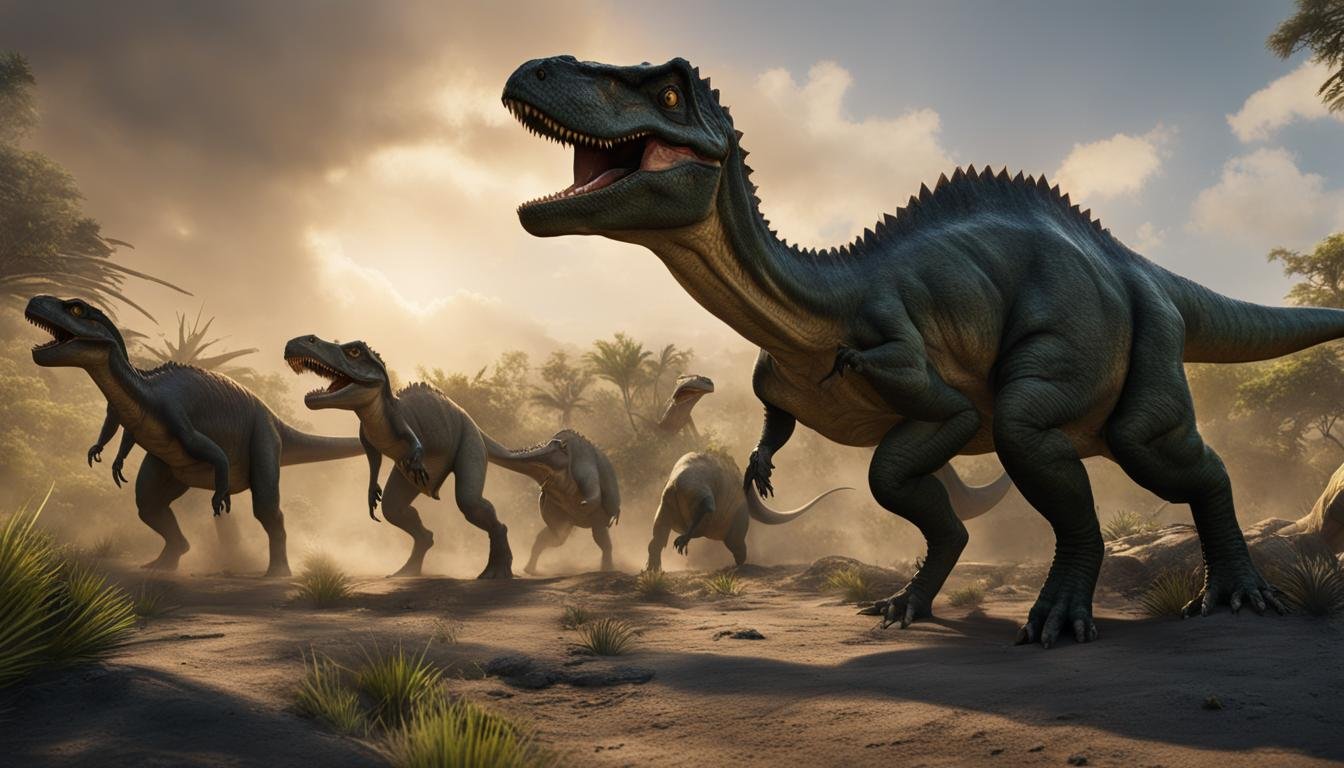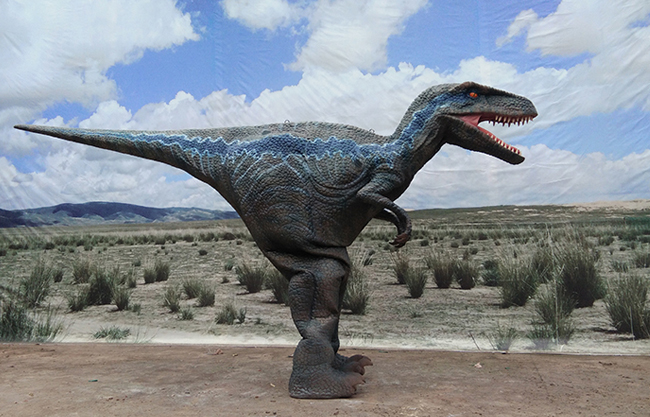If dinosaurs were alive today, life would be significantly more dangerous, especially in areas where large carnivorous species like Tyrannosaurus rex or Velociraptors roamed. Modern infrastructure and safety measures would struggle to contain these massive creatures, posing a threat to both urban and rural populations. The coexistence of humans and dinosaurs would require drastic changes to transportation, agriculture, and daily life to avoid conflicts with these ancient predators, making survival a constant challenge.
Introduction:

Brief context on dinosaurs coexisting with modern life:
Imagine a world where dinosaurs, some as small as chickens and others as massive as skyscrapers, roam freely across continents. This would introduce an entirely new layer of challenges to modern life. From bustling cities to remote rural areas, humanity would need to learn to live alongside creatures that have been extinct for millions of years. The coexistence would lead to a drastic shift in how we perceive safety and survival.
The inherent dangers of such a reality:
Dinosaurs, especially large carnivores, would pose significant threats to human safety. Unlike other large predators in the modern world, these prehistoric creatures lack any fear of humans or built environments. The risks would range from random attacks to large-scale destruction caused by the sheer size and strength of many species. The unpredictability of interactions with such creatures would make daily life far more perilous.
Threat to Human Life:

Predatory dinosaurs and their impact on populated areas:
Predatory dinosaurs, like Tyrannosaurus rex or Velociraptors, would turn populated areas into potential hunting grounds. Suburban and urban areas, in particular, would face increased danger due to the proximity of large prey (humans) and dense infrastructure. Residents would have to navigate the constant threat of ambush or attack from these massive predators, whose natural hunting instincts would be triggered by the movement and sounds of city life.
Challenges in preventing attacks and ensuring safety:
Preventing dinosaur attacks would require significant advancements in technology and infrastructure. Current fencing and security measures would be insufficient against the raw power of creatures like the T. rex. Governments and communities would need to invest in high-tech containment systems, advanced surveillance, and possibly even armed response teams to protect against these creatures. This would also lead to significant societal and ethical challenges in deciding how to handle conflicts with dinosaurs.
Impact on Infrastructure:

Difficulty in managing dinosaurs within urban and suburban environments:
Managing dinosaurs in densely populated areas would be a logistical nightmare. Roads, bridges, and public spaces would need to be reinforced to handle the weight and potential destructive behavior of large dinosaurs. Imagine a Brachiosaurus wandering through a city, accidentally toppling streetlights and crushing vehicles. Public transportation would have to be redesigned to avoid encounters with these creatures, possibly even moving underground or creating aerial routes for safety.
Potential damage to transportation, buildings, and public spaces:
The sheer size of dinosaurs would make them a significant threat to infrastructure. A rampaging carnivore could easily bring down power lines, damage buildings, or block roads. Herbivorous dinosaurs, despite being less aggressive, could still cause massive destruction by trampling crops, damaging parks, and collapsing structures under their immense weight. Ensuring the safety and integrity of public spaces would be a monumental task requiring constant monitoring and maintenance.
Changes to Agriculture and Economy:

Agricultural disruptions due to herbivorous dinosaurs:
Herbivorous dinosaurs like Triceratops and Stegosaurus would pose a severe threat to agriculture. These large creatures would see farmland as an abundant food source, trampling through crops and consuming vast amounts of vegetation. Farmers would struggle to protect their land from being ravaged by hungry dinosaurs, leading to potential food shortages and economic instability.
Economic implications of dinosaur-related damages and precautions:
The economic impact of living alongside dinosaurs would be immense. Businesses and governments would need to allocate significant resources to dinosaur-proof infrastructure, insurance premiums would skyrocket, and industries like agriculture and construction would face constant setbacks from dinosaur-related damage. Additionally, there would be new economic opportunities, such as developing technologies to deter dinosaurs or creating tourist attractions centered around them, but these would come at a high cost.
Survival Strategies:

New safety protocols and technology:
The introduction of dinosaurs into modern life would necessitate the creation of advanced safety protocols. Urban planning would involve building structures that could withstand dinosaur encounters, and transportation routes would be designed to avoid known dinosaur territories. Technology would likely evolve to include advanced tracking systems, barriers, and even weapons specifically designed to defend against these creatures. Additionally, entire industries would develop around dinosaur containment and control.
Adaptations in human behavior and lifestyle:
Humans would need to significantly adjust their daily behaviors to coexist with dinosaurs. This could involve changes in commuting patterns, with people avoiding travel during times when dinosaurs are most active. Daily life may include frequent safety drills, similar to earthquake or fire drills, teaching people how to react during a dinosaur encounter. Communities might also form in more isolated or fortified areas to reduce the risk of dinosaur attacks, fundamentally altering the way we live and interact with our environment.
Conclusion:
The coexistence of humans and dinosaurs would dramatically alter life as we know it, transforming every aspect of society from urban planning to agriculture and personal safety. The presence of these ancient creatures, especially large carnivores and herbivores, would pose immense challenges, forcing humanity to adapt quickly and creatively. Governments and communities would need to develop advanced technologies and infrastructure to contain and manage the risks associated with dinosaurs.
The threat to human life, infrastructure, and the economy would be substantial, necessitating new survival strategies and behavioral adaptations. While the idea of living alongside dinosaurs is fascinating, it also underscores the delicate balance of our current ecosystems and the dangers that such powerful creatures would introduce to the modern world. Ultimately, this scenario reminds us of the importance of understanding and respecting the natural world and the prehistoric past that shaped it.
If dinosaurs were alive today, what would happen to humans?
Humans would likely face serious survival challenges, with habitats and resources shared or taken over by dinosaurs.
What would happen if dinosaurs came back to life?
There would be ecological disruptions, possible extinction of modern species, and significant danger to human populations.
If dinosaurs never went extinct, would humans exist?
It’s uncertain, but the evolution of mammals (including humans) might have been different or delayed if dinosaurs dominated.
What would it be like if dinosaurs roamed the Earth?
It would be a dangerous world with restricted human movement and habitat destruction due to the presence of large predators and herbivores.
What would happen if dinosaurs were still alive today?
Humans would need to adapt by living in fortified cities or other protected environments, with a focus on coexisting or avoiding dinosaurs.
If dinosaurs were alive today, where would they live?
Dinosaurs would likely inhabit remote, wild areas such as forests, savannas, and mountains, depending on their species and environment needs.
If dinosaurs were alive today, what would they look like?
Dinosaurs would likely retain their ancient forms, but some might evolve, potentially having feathers or other adaptations seen in modern birds.
If dinosaurs were alive today, would they be intelligent?
While some dinosaurs like Velociraptors showed signs of intelligence, they likely wouldn’t match human intelligence but might have evolved complex behaviors.
Would humans survive if dinosaurs were still alive?
Survival would be challenging but possible with advancements in technology and strategies for living alongside or avoiding dinosaurs.



